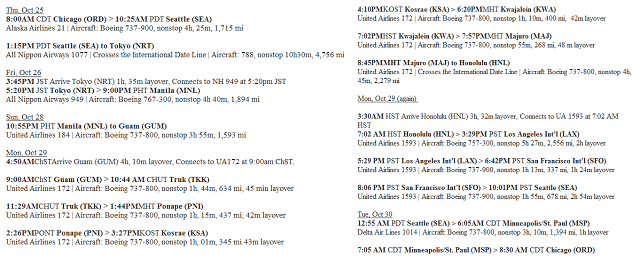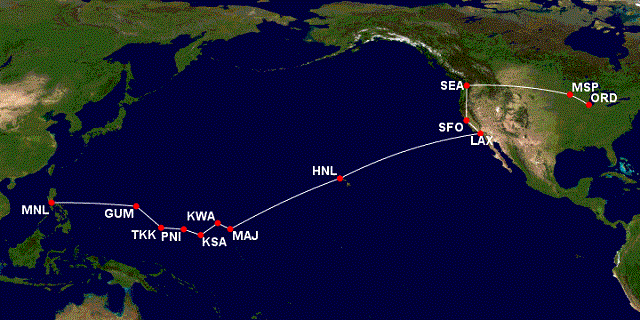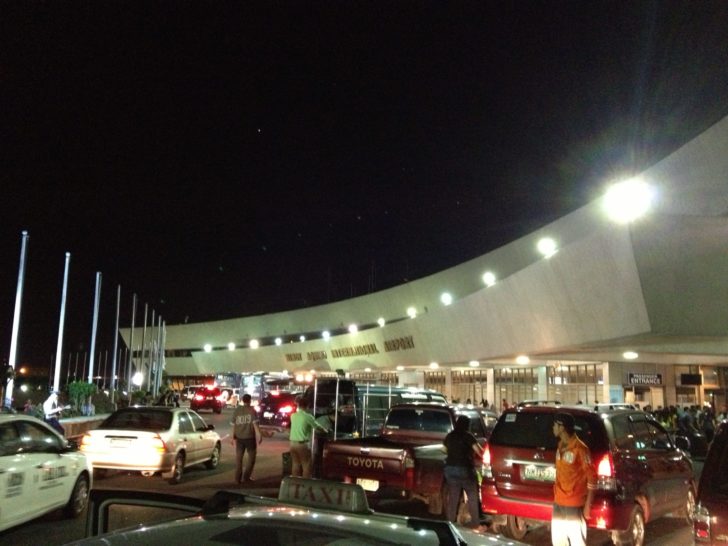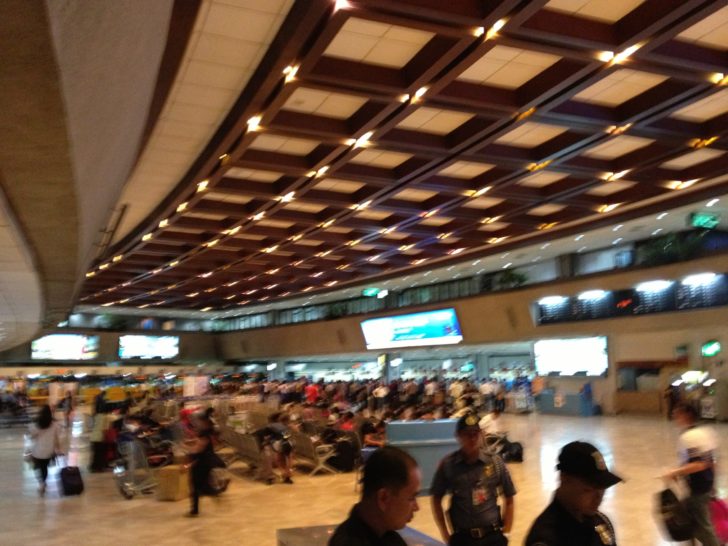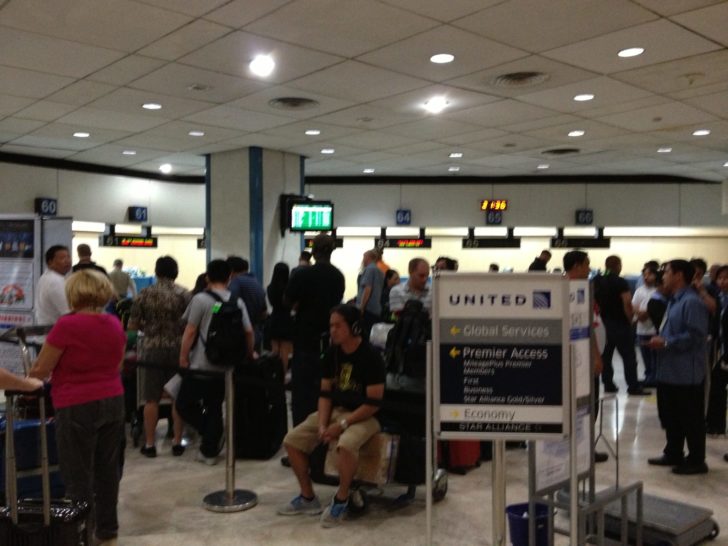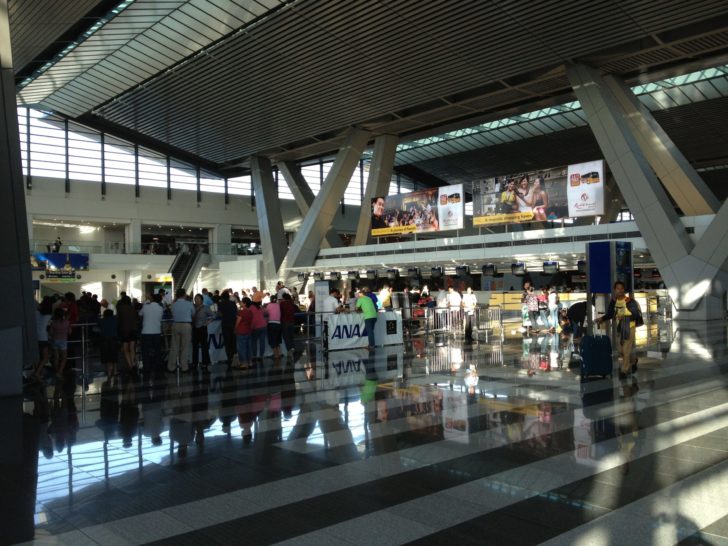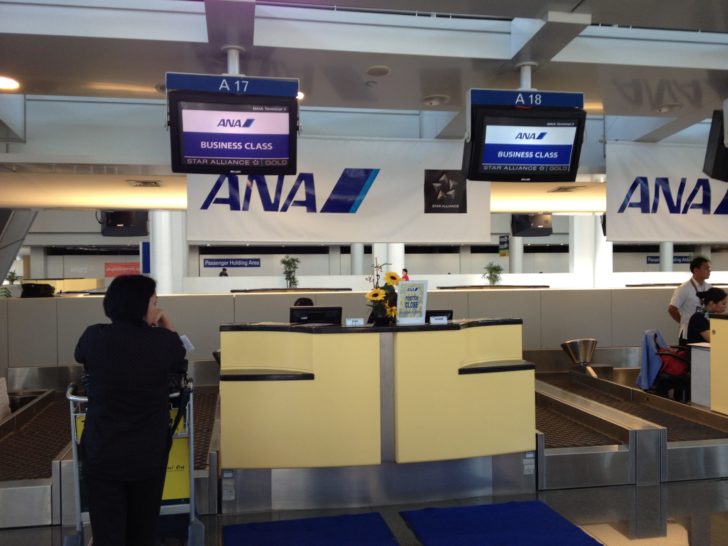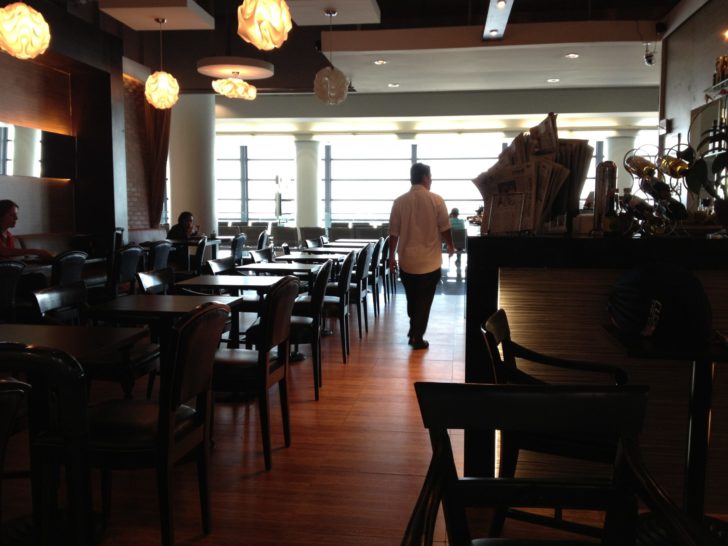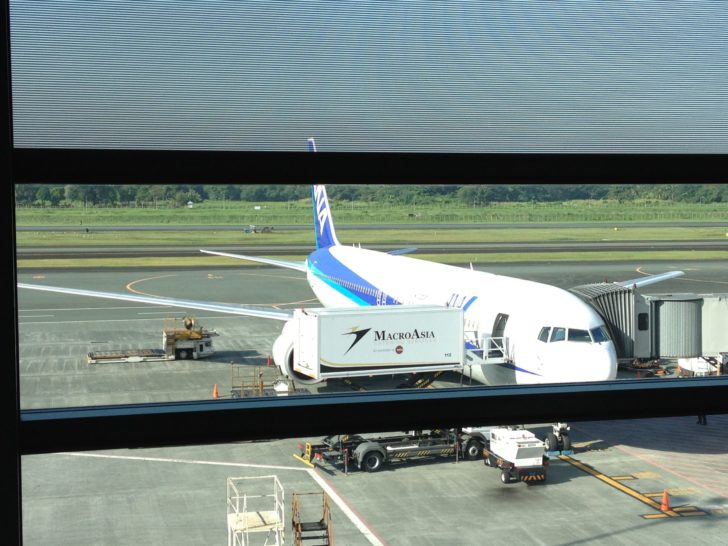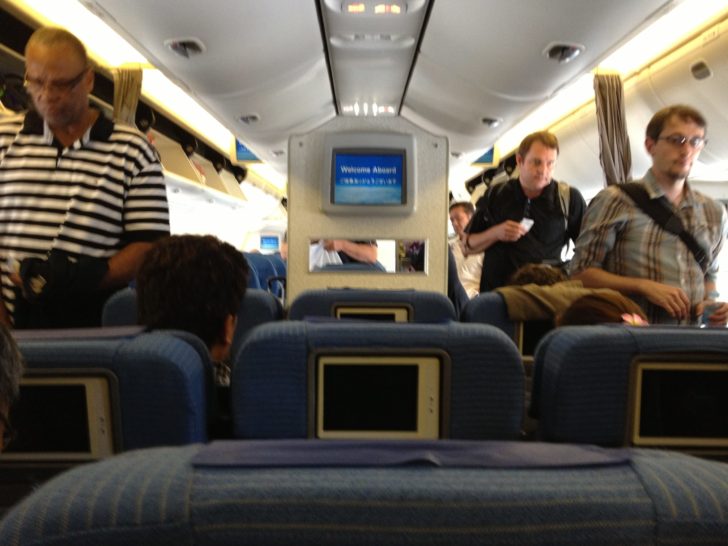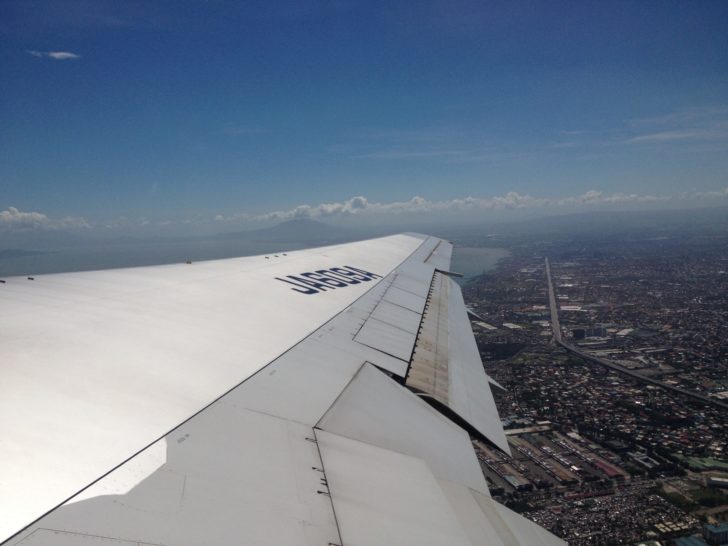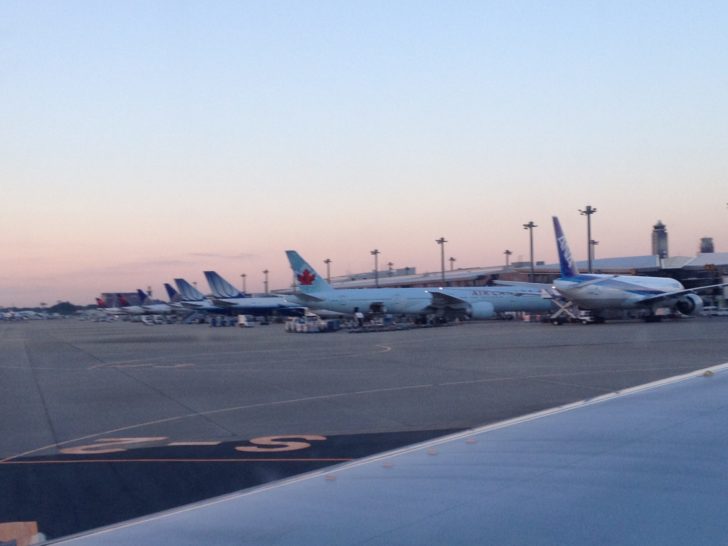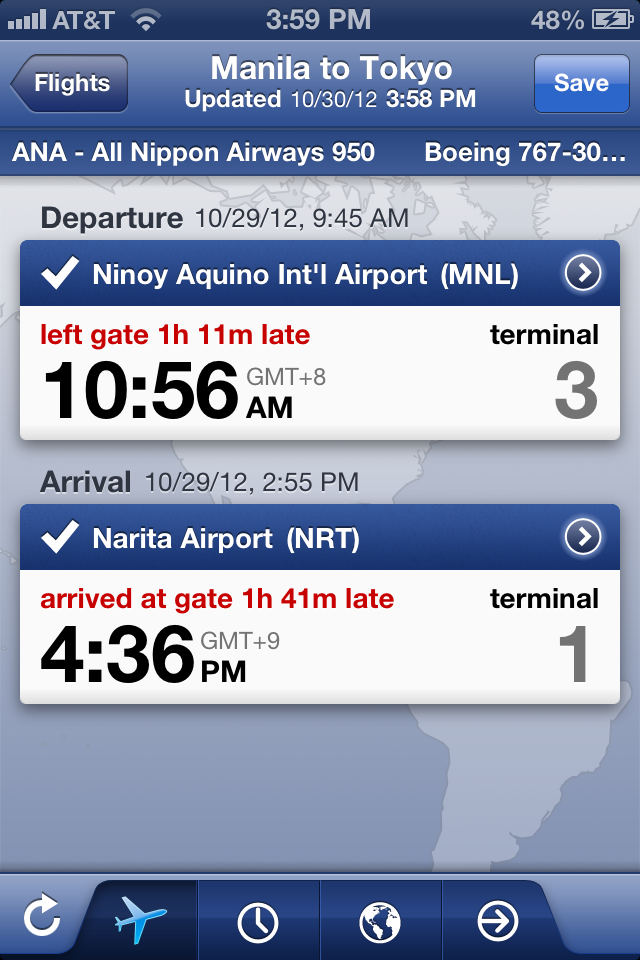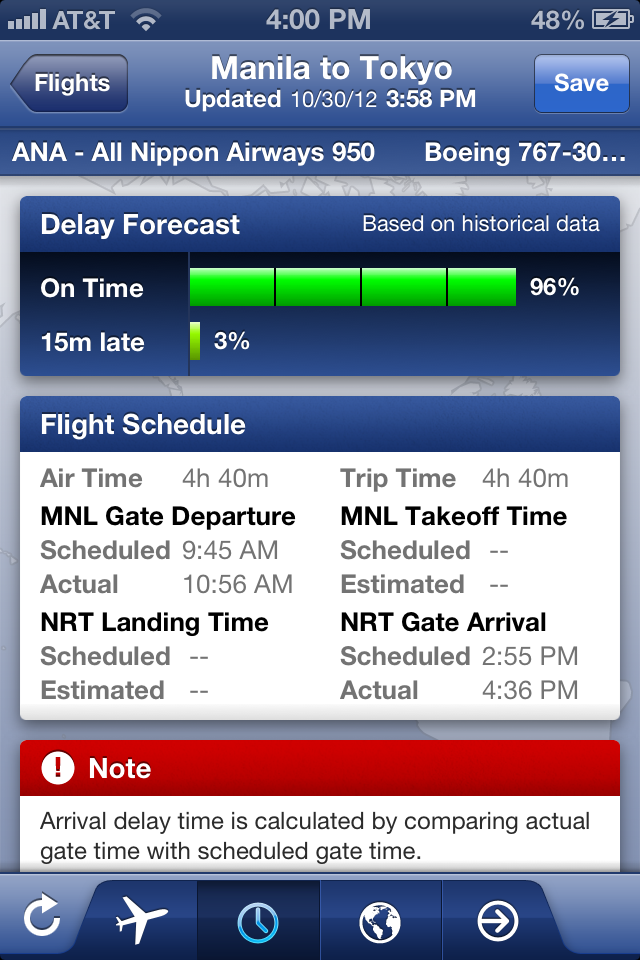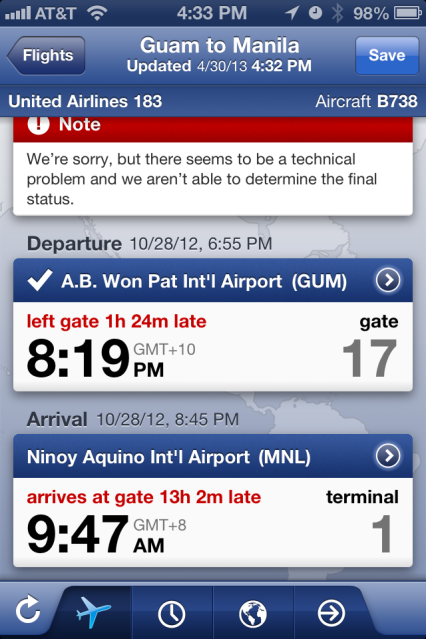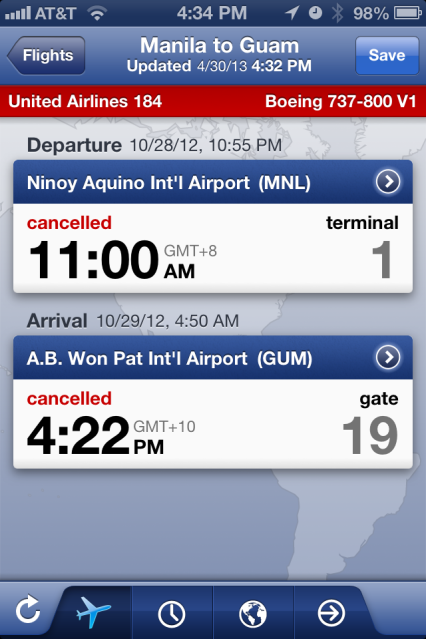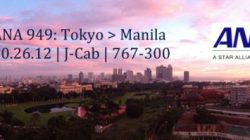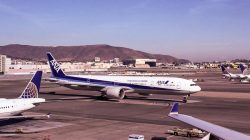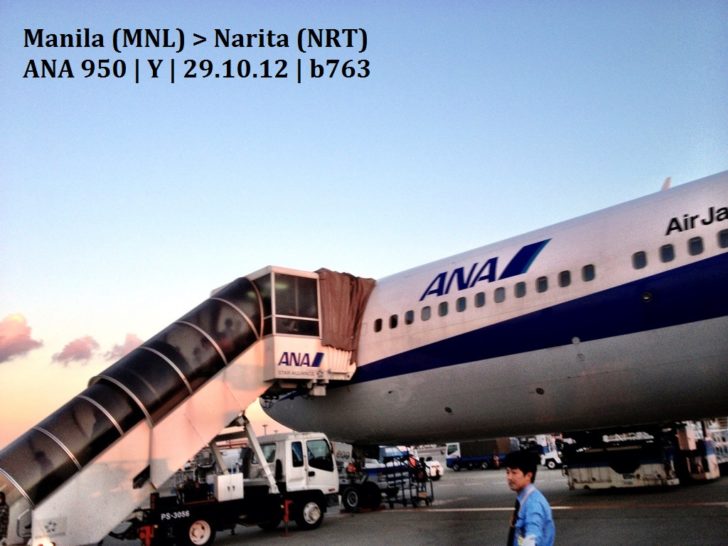
Earlier this winter, I published two of my trip reports on airliners.net reviewing my 787 experience in All Nippon Airways Economy from Seattle to Tokyo, and in ANA Business Class from Tokyo to Manila. These two segments were part of a larger journey from Seattle to Manila last October that my friend B and I booked, as it would allow the opportunity to fly the 787 outbound and return inbound via the United “Island Hopper” that flies between Guam and Honolulu thrice weekly via Micronesia and the US Marshall Islands.
Here was the final itinerary and routing prior to departure:
Well, much drama took place on the outbound journey, but I encourage you to read the full trip reports to learn more, as it is a lot to reproduce in a cliff’s notes version on this blog entry. One of the many casualties of this trip was, sadly, the Island Hopper, as our oubound flight from Manila to Guam was cancelled (thanks, United!) and so we missed our connecting itineraries onward from there as a huge domino effect. Allegedly, a medical diversion had occured on the inbound flight from Guam, removing the aircraft from service and preventing it from picking up passengers in Manila.
Ninoy Aquino International Airport (NAIA) has one of the world’s worst international terminals, and getting our return journeys home situated in the irregular ops (IRROPs) situation was an absolute nightmare. Once my friend and I had discovered our flight to Guam was cancelled, we split up to try and figure out a way to get home. He stayed at the ticket counter (which was the smarter decision) and managed to get re-routed on Asiana to fly Manila > Seoul Incheon > Tokyo > Chicago (which was my idea to begin with).
I, on the other hand, exited the terminal and made my way up to the United ticket offices attempting to get on the same Asiana flight. After an hour of painful waiting, I was told that SHARES had messed up my reservation to show that I was terminating my journey in Honolulu, and I was basically told nothing could be done. At that moment, my friend texted me (his phone has spotty service in foreign countries) and informed me that his situation had been sorted out and he was already through security and ready to board the Asiana red-eye to Seoul.
Essentially, I had wasted my time up at the ticket offices while he had been successful, which was infuriating. Also, realizing that I was stranded by myself in the Philippines at that moment was completely terrifying, random and unexpected all at the same time. The Asiana flight departed shortly after and I dragged myself back to the United ticket counter like a dog with its tail between its legs.
In the end, I was re-routed back via Tokyo, the same path I had taken on the inbound journey from Seattle to Manila, flying on All Nippon Airways to Narita and United to Seattle. Since I had been upgraded to Business on one of my originally scheduled flights back home, United honored my upgrade and I was placed into a premium cabin on the Tokyo to Seattle flight, so that calmed my nerves a bit.
It was a disaster scene at the United check-in counters at NAIA T1 in Manila after our flight UA182 to Guam was cancelled. The grounds crew at MNL were poorly trained in handling the IRROPs situation as we waited for hours without any announcements or further information.
Since the originally scheduled MNL-GUM flight is a red-eye, and the rebooked MNL-NRT flight leaves in the morning, I received a hotel accomodation at the Diamond Hotel in Manila for the night. This was a pretty generous voucher that included complimentary room service for dinner and buffet breakfast (but I only received it since I had upgraded to Business Class for the Tokyo to Seattle sector later on). I think the other YCL passengers were sent to a budget hotel near the airport.
The following morning, my transfer dropped me off at Terminal 3 at NAIA. All Nippon is the only non-Filipino carrier operating out of this newly-constructed terminal, but despite this distinction, the systems were down and the carrier had to process each passenger manually, which lead to a nearly two-hour departure delay. Seriously, the travel gods were not in my favor for this trip.
Being Star Gold, I asked if there was any designated lounge, in which case was a restaurant in the terminal that was siphoned off for those who ordinarily had lounge access. It wasn’t much, but drinks, snacks and WiFi was free. I took advantage of the situation to FaceTime a few people and get caught up in world news, as this was around the time when superstorm Sandy was making its way towards the Northeastern U.S.
Boarding was pretty slow and painful given that every passenger had to be re-issued a proper boarding pass. I was initially relegated to a YCL middle-row seat on one of ANA/Air Japan’s old 767s, but found an empty row towards the rear of the plane to wedge out.
The flight itself was pretty uneventful aside from the nerve-racking feelings of missing my onward connection at Narita. Each seat in both cabins are equipped with a personal TV, but the screen is very 1st-generation and the system hardware is pretty outdated, even though it is AVOD. I gave up trying (I had also exhaused ANA’s relatively limited IFE movie selection on the outbound journey) and mostly just watched TV episodes of Modern Family on my iPad.
Economy class catering is one of All Nippon’s bigger strength areas. Cocktails, including beer, wine, sake, scotch, gin and vodka, are all complimentary to main cabin passengers, and ANA provides a full lunch service on this flight (which is roughly anywhere from 3.5 to 4 hours, give or take). Meal service is advertised in the in-flight magazines with very accurate detail so passengers know what to expect, and are dichotomized into a J (Japanese) or W (Western) offering.
I went with the western meal, which consisted of a 3-course offering. The starter was a tasty macaroni and ham salad served alongside a roast beef, horseradish, lettuce and tomato salad. Odd pairings, indeed, but very yummy. The main entree was a sumptuous chicken dish with a tangerine demi-glaze, mashed potatoes, carrots and bok choy. To finish, ANA served YCL pax a delicious lemon tart pie. Ancillary items included spreadable cheese, bread and butter.
All in all, one of the higher-quality in-flight meals I’ve received in international coach.
Descent and arrival into Narita was beautiful, but the ambience on-board the flight was tense at best. A huge majority of the passenger make-up on this flight was in-transit between the USA and Canada over Tokyo, and already, those traveling to New York-area, Washington, D.C. and Toronto were informed that their flights were cancelled. Meanwhile, there was a huge bank of flights leaving for Houston, San Francisco, Seattle, Los Angeles, Chicago, Vancouver and Calgary and we were all scrambling to make those connections in midst of a huge delay.
To add insult to injury, we landed on the far runway (near the JAL terminal) and taxied for a good 20 minutes before being parked at a remote stand. We basically would have to be bussed to the terminal. Not looking forward to the transit experience through security screening (which had been hellish on the outbound) I felt panicky.
I also did not have my boarding pass issued for my United flight from Tokyo to Seattle. With all of the changes occuring thanks to the storm, a lot of passengers had been re-booked on alternate flights, and I was afraid I was going to lose my Business Class seat. In actuality, I wasn’t even really sure I was confirmed in premium class, because the re-booking stub that had been issued to me in Manila simply read “First’ on class of carriage, and I had foolishly not called United in between to investigate what that had meant.
Anyways, I’ll continue reporting on the rest of the onward journey in the next section. Here are the flight operational statistics to show the impact of the system snarl, courtesy of Mobiata FlightTrack
In summarization, Manila NAIA Terminal 1, where we had originally reported for our United flight to Guam, is quite possibly the dodgiest airport edifice I have ever encountered. I literally shudder when I think back to the time I spent in that airport trying to sort through the mess.
ANA offers a nice product, except this time around, they did cause a major inconvenience through the system snarl, resulting delay, and subsequent remote parking dilemma.
I’ll comment more on Narita airport and United BusinessFirst in a separate posting.
As for the Island Hopper, B and I may re-attempt it again this fall, but stay tuned for more developments on that end.
Here are the operational statistics for our originally scheduled flights from Manila to Guam, showing how the inbound aircraft on UA 183 actually LEFT Guam, albeit delayed 1 hr 24 mins, with an ETA into Manila at 8:45 PM (plus time lost due to the delay). The return flight on United 182 (which we were supposed to fly) originally was delayed until 11 AM the next morning, but was ultimately cancelled.
There are still so many sketchy details and missing elements to this mystery flight. Where did it go after it took off from Guam? Did it return to Guam? Did it actually make it to Manila? And I have two inside sources at United giving me conflicting data. One said it was a medical diversion closer to the actual “incident.” Another told me it was due to weather. Whatever the case, I wish I knew what the real answers are.
I highly recommend reading the trip report in full, as it makes for a comically delightful read and has been getting a good amount of attention on airliners.net:

